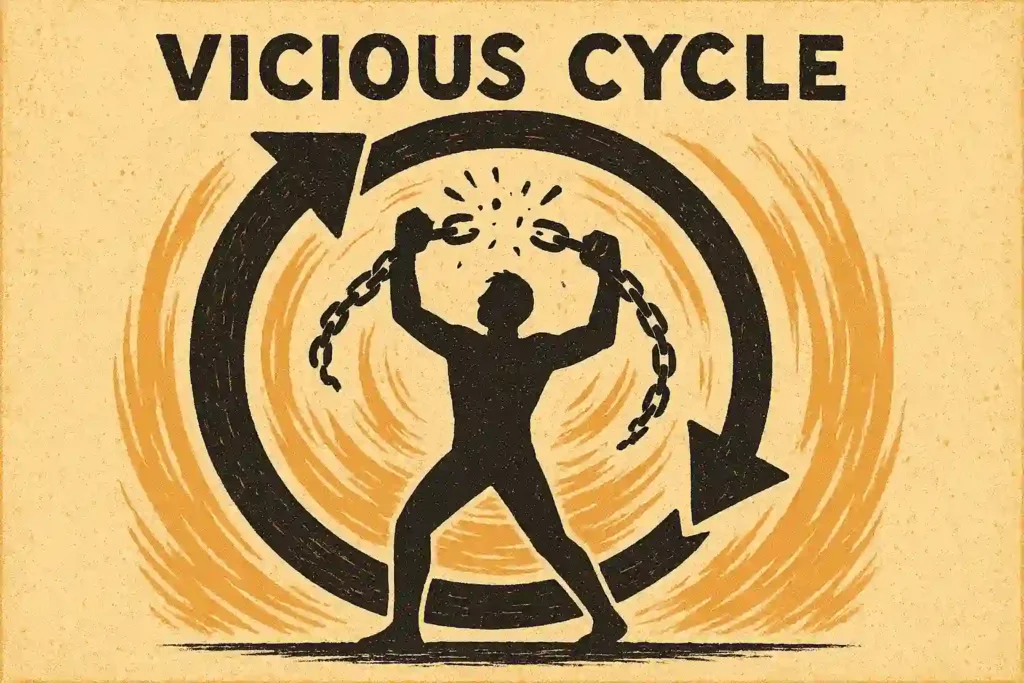Shyness is that feeling of unease or inhibition in social situations, often stemming from a fear of judgment. Insecurity is a broader lack of self-assurance, a persistent self-doubt that can permeate many areas of life. If you often find yourself battling these feelings, you’re not alone. Many people who are shy and insecure need confidence to unlock their full potential. This comprehensive guide isn’t just about surface-level tips; it’s a deep dive into understanding the roots of these challenges and, more importantly, a practical roadmap filled with actionable strategies. By the end of this article, you’ll have the tools and insights to cultivate genuine, lasting self-assurance and step into a more confident version of yourself.
Table of Contents
Understanding the Core: Why Am I So Shy and Insecure?
It’s a question many ask. Shyness and insecurity aren’t character flaws; they’re often complex responses shaped by various factors. Understanding where these feelings come from is the first powerful step toward building the confidence you desire.
- Defining the Terms: Shyness vs. Insecurity vs. Introversion
- Shyness: Primarily a social experience characterized by nervousness, apprehension, and awkwardness around others, often driven by a fear of negative evaluation. (As highlighted by resources like Psychology Today).
- Insecurity: A more generalized lack of confidence or assurance in oneself or one’s abilities. It can manifest beyond social situations, affecting decisions, goals, and self-worth.
- Introversion: Often confused with shyness, introversion is a personality trait where individuals gain energy from solitude and may find highly stimulating social environments draining. Introverts aren’t necessarily shy; they may be perfectly confident in social settings but prefer smaller groups or one-on-one interactions.
- Common Culprits: Tracing the Origins
- Past Experiences: Negative social encounters, criticism, bullying, or perceived failures, especially during formative years, can ingrain feelings of inadequacy.
- Learned Behaviors & Upbringing: Growing up in an overly critical environment or with caregivers who were themselves anxious or insecure can model these behaviors.
- The Inner Critic & Negative Self-Talk: A persistent internal voice that highlights flaws, doubts abilities, and predicts negative outcomes. This is a major factor in maintaining insecurity (a concept often discussed in CBT and resources like Verywell Mind).
- Fear of Judgment: An overwhelming concern about what others think, leading to self-monitoring and avoidance of situations where one might be evaluated.
- Social Comparison: Constantly measuring oneself against others (often their highlight reels on social media) can breed feelings of not being “good enough.”
- Temperament: Some individuals may have a naturally more cautious or sensitive temperament, making them more prone to shyness (Psychology Today often discusses the biological and temperamental aspects of shyness).
- The Vicious Cycle: How Shyness and Insecurity Feed Each Other
- Feeling shy leads to avoiding social situations.
- Avoidance prevents the development of social skills and positive experiences.
- Lack of skills and positive reinforcement deepens insecurity.
- Increased insecurity makes future social interactions even more daunting, reinforcing shyness. Breaking this cycle is key.

The Transformative Power of Authentic Confidence
Confidence isn’t about being loud, arrogant, or fearless. True, authentic confidence is a quiet, steady belief in your own worth and abilities. It’s understanding that you can handle life’s challenges, learn from setbacks, and deserve to take up space. When you’re shy and insecure and need confidence, cultivating this authentic version is the goal.
- What Genuine Confidence Looks and Feels Like
- Self-Acceptance: Acknowledging your strengths and weaknesses without harsh judgment.
- Resilience: The ability to bounce back from mistakes and criticism.
- Assertiveness: Expressing your needs, opinions, and boundaries respectfully.
- Openness to Experience: Willingness to try new things and step outside your comfort zone.
- Inner Calm: A sense of security that doesn’t depend on external validation.
- Why Confidence is the Ultimate Antidote
- It directly counters the fear of judgment by grounding you in your self-worth.
- It silences the inner critic with a more balanced, compassionate inner voice.
- It empowers you to take action despite fear, breaking the avoidance cycle.
- The Ripple Effect: Benefits of Increased Self-Assurance
- Improved Relationships: More open, honest, and fulfilling connections.
- Career Advancement: Greater willingness to take on challenges, share ideas, and pursue opportunities.
- Reduced Anxiety & Stress: Less worry about others’ perceptions and more focus on the present.
- Enhanced Well-being: A greater sense of happiness, purpose, and life satisfaction. (For more on self-esteem benefits, check authoritative sources like Verywell Mind).
- Achieving Personal Goals: The drive and belief needed to pursue your aspirations.
Your Action Plan: Practical Strategies to Build Unshakeable Confidence
Building confidence when you’re shy and insecure is a journey, not an overnight transformation. It requires consistent effort and the right strategies. Here’s your step-by-step action plan:
Master Your Mindset: The Foundation of Confidence
Your thoughts shape your reality. Changing how you think is paramount.
- Challenge and Reframe Negative Self-Talk:
- Identify: Become aware of your automatic negative thoughts (ANTs). When do they pop up? What do they say?
- Challenge: Question their validity. Are they 100% true? What evidence supports or refutes them? Would you say this to a friend?
- Reframe: Replace them with more balanced, realistic, and compassionate statements. Example: Instead of “I’m going to make a fool of myself,” try “I might feel nervous, but I can handle it, and it’s okay if it’s not perfect. This is a chance to learn.”
- Cultivate Self-Compassion:
- Treat yourself with the same kindness and understanding you’d offer a good friend who is struggling.
- Acknowledge that imperfection is part of being human.
- For more on self-compassion, Dr. Kristin Neff’s work is a great resource. (Self-Compassion.org)
- Embrace Imperfection & a Growth Mindset:
- Perfectionism is a confidence killer. Strive for progress, not perfection.
- View mistakes as learning opportunities rather than proof of inadequacy.
- Adopt a growth mindset (popularized by Carol Dweck): Believe that your abilities can be developed through dedication and hard work.
- Practice Positive Affirmations (Mindfully):
- Choose affirmations that resonate with you and feel believable.
- Instead of “I am fearless,” try “I am learning to manage my fear and act courageously.”
- Repeat them daily, especially during moments of doubt.
- Visualize Success:
- Mentally rehearse challenging situations, imagining yourself handling them with confidence and competence. Visualize the positive feelings associated with success.
Take Action: Daily Steps to Grow Your Confidence
Confidence is built through experience. You need to act your way into feeling confident.
- Start Small & Build Momentum:
- Don’t try to conquer your biggest fear on day one.
- Set small, achievable goals. Example: If you’re shy, your goal might be to make eye contact and smile at one new person today, or ask one question in a group chat.
- Celebrate these small wins! They build evidence for your brain that you can do it.
- Gradually Expand Your Comfort Zone:
- Systematically expose yourself to situations that make you slightly uncomfortable. Each time you face a fear and realize you survived (and maybe even enjoyed it), your comfort zone expands.
- This is similar to exposure therapy principles used in psychology.
- Pay Attention to Your Body Language:
- How you hold yourself impacts how you feel.
- Stand tall, shoulders back, make appropriate eye contact.
- Practice “power poses” in private if it helps you feel more assertive (Amy Cuddy’s research, though debated, offers an interesting perspective).
- Develop Communication & Social Skills:
- Active Listening: Focus on truly hearing and understanding others, rather than worrying about what you’ll say next.
- Asking Open-Ended Questions: Encourage conversation and show genuine interest.
- Small Talk Practice: It’s a skill that can be learned. Prepare a few general topics or questions.
- Consider resources or courses if this is a major challenge (e.g., Toastmasters for public speaking).
- Practice Assertiveness:
- Learn to say “no” without guilt.
- Express your needs and opinions respectfully, even if they differ from others.
- Start in low-stakes situations and build up. For great tips on developing social skills and assertiveness, HelpGuide.org is a valuable resource.
- Focus on Your Strengths & Values:
- Identify what you’re good at and what’s important to you.
- Engage in activities that utilize your strengths and align with your values. This naturally boosts self-esteem.
- Engage in Hobbies & Interests:
- Doing things you enjoy and are passionate about builds competence and provides opportunities for positive social interaction with like-minded people.
- Prioritize Self-Care:
- Adequate sleep, good nutrition, and regular exercise have a profound impact on your mood, energy levels, and resilience, all of which support confidence.
- Build a Supportive Network:
- Spend time with people who uplift you, believe in you, and encourage your growth.
- Limit contact with overly critical or negative individuals.
- “Act As If” (Mindfully):
- Sometimes, acting as if you are confident can actually help you feel more confident. This isn’t about being fake, but about adopting the behaviors of a confident person, which can then influence your internal state.

Applying Confidence Techniques in Specific Scenarios
- Social Gatherings:
- Preparation: Think of a few conversation starters or questions beforehand.
- Arrive with a Goal: e.g., “I’ll talk to two new people.”
- Focus Outward: Pay attention to others rather than your own internal anxiety.
- Be Curious: Ask people about themselves.
- Work or School:
- Prepare for Meetings/Classes: Know your material.
- Aim to Contribute One Point: Even a small contribution builds confidence.
- Volunteer for Tasks: Taking on challenges and succeeding builds competence.
- Dealing with the Fear of Judgment:
- Reality Check: Most people are more focused on themselves than on judging you.
- Decatastrophize: Ask yourself, “What’s the worst that could happen? And could I handle it?”
- Shift Focus: Concentrate on your purpose or the task at hand, rather than on potential judgment.
Nurturing Your Confidence for the Long Haul
Building confidence isn’t a one-time project; it’s an ongoing practice. Here’s how to keep the momentum going:
- Consistency is Key: Little and often is more effective than sporadic big efforts. Make these strategies part of your routine. Our article on developing self-discipline can offer complementary insights here.
- Journaling for Reflection & Progress:
- Track your efforts, successes, and what you’re learning.
- Note situations where you felt confident and what contributed to that.
- Acknowledge when you stepped out of your comfort zone, regardless of the outcome.
- Seek Constructive Feedback (Wisely):
- Ask trusted friends, mentors, or colleagues for feedback on specific areas.
- Focus on actionable advice rather than vague criticism.
- Embrace Lifelong Learning & Growth:
- Continuously learning new skills or knowledge builds competence and adaptability. Consider exploring our guide to good habits for more ideas on personal development.
- Acknowledge Progress & Celebrate Your Wins (Big and Small):
- Don’t just focus on how far you have to go. Look back and see how far you’ve come.
- Reward yourself for your efforts and achievements.
- When to Consider Professional Help:
- If shyness and insecurity are severely impacting your daily life, relationships, or career, or if you suspect you might be dealing with social anxiety disorder, a therapist or counselor can provide invaluable support. (Psychology Today often features articles on when to seek therapy: Psychology Today).
- Cognitive Behavioral Therapy (CBT) is particularly effective for these issues.
This journey from being shy and insecure and needing confidence to becoming self-assured is one of the most rewarding you can undertake. If you’re looking for a more structured approach, our practical guide to developing confidence offers even more targeted exercises.
Conclusion: Step Into Your Confident Self
Overcoming deep-seated shyness and insecurity to build genuine confidence is a courageous path. It requires patience, consistent practice, and a willingness to be kind to yourself along the way. Remember, confidence isn’t about being someone you’re not; it’s about becoming more fully who you are – a capable, valuable individual with unique strengths to offer the world.
The strategies outlined here are your toolkit. Start with one or two that resonate most, implement them consistently, and watch as your self-assurance begins to grow. You don’t have to let shyness and insecurity dictate your life. The power to change and build the confidence you need lies within you.
Can someone who is shy and insecure truly become confident?
Absolutely! While personality traits like introversion might be stable, shyness and insecurity are often learned patterns of thought and behavior. With consistent effort, self-compassion, and the right strategies (like those in this guide!), anyone can significantly build their confidence and reduce feelings of shyness and insecurity. It’s a journey of growth.
What’s the quickest way to feel more confident if I’m shy?
While lasting confidence takes time, a quick boost can come from changing your physiology: stand tall, smile, and make eye contact. Also, achieving a very small, manageable goal can give you an immediate sense of accomplishment. For instance, decide to speak up once in a low-pressure situation and then acknowledge that small win.
How do I stop caring so much about what others think when I’m insecure?
This is a common challenge. Start by realizing that people are usually more preoccupied with their own lives and insecurities than with judging you. Practice mindfulness to stay present, and challenge your negative assumptions about others’ thoughts. Focus on your own values and what you think of yourself, rather than outsourcing your self-worth.
Is being shy the same as having social anxiety disorder?
Not necessarily. Shyness is a personality trait involving discomfort in social situations. Social Anxiety Disorder (SAD) is a more intense, persistent fear of social situations that can significantly interfere with daily life. While there can be overlap, SAD often involves more severe anxiety, avoidance, and distress. If you suspect SAD, consulting a mental health professional is recommended
What if I try these confidence-building tips and still feel very insecure?
Be patient and kind to yourself; progress isn’t always linear. Some days will be harder than others. If you’ve been consistently applying strategies for a while and still feel stuck or overwhelmed by insecurity, it might be beneficial to seek support from a therapist or counselor. They can offer personalized guidance and help address any deeper underlying issues.
If this guide has resonated with you, please consider sharing it with others who might be on a similar journey. Let’s rise and glow together!



